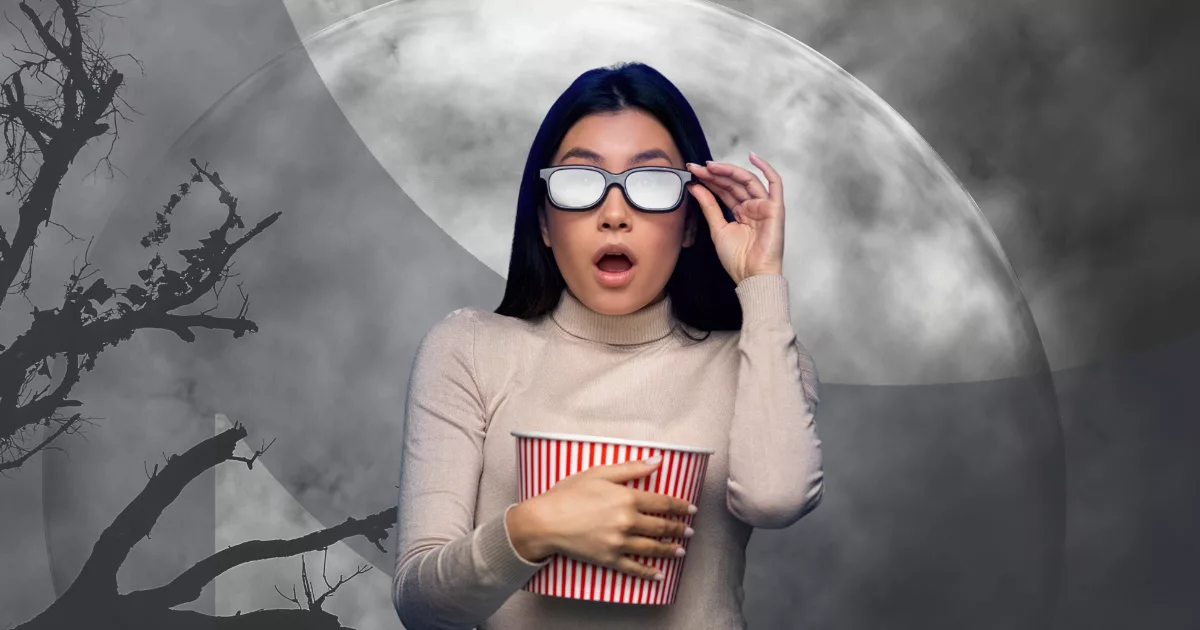The summer of 2023 saw an incredible cinema season, with Barbie racking in nearly 1.2B worldwide, becoming one of the highest-grossing films of all time. Additionally, its cinema counterpart, Oppenheimer, which premiered the same day, grossed over 648M worldwide. After the global pandemic, movie theaters across the US were severely impacted, and even three years later, have yet to see a steady attendance of moviegoers since 2019, a year before COVID-19.
Still, while many may opt to stream a new movie or rent on-demand, one industry continuously reports high revenue from a constant stream of moviegoers: the horror industry.
Action movies, such as the beloved Marvel franchise, may spend millions on production, but the return is lower than the horror genre, a surprising tidbit for most cinema fans. From the marketing to the public relations, a few fascinating factors explain why horror movies gross more money and welcome a higher number of movie attendees.
Marketing is Cheaper – and More Effective.
In the summer of 1999, a documentary-type, found footage film was released, one of the first movies to be marketed solely by the internet. The Blair Witch Project’s marketing crew posted missing person flyers around the streets of Maryland, published fake police reports on its website, and fooled hundreds of viewers into thinking the disappearances of the film’s stars were real. The director even shielded the movie’s stars from press interviews or in-person promotional work to market the film.
The tactic was simple, affordable, and immensely effective. The movie grossed over 248M on a modest budget of only $60,000. The production team’s marketing ploy enticed horror fanatics to see the mystery of the Blair Witch themselves and even fooled the masses into believing the on-screen disappearances were authentic.
As the internet continued to explode and social media became a pillar for marketing campaigns, more movies capitalized on the power of reaching audiences far and wide and, more importantly, tricking them into believing the marketing strategies were real.
Similar to The Blair Witch Project, Paranormal Activity, a found-footage film that documents the haunting and possession of a couple, leveraged online marketing to tailor the film into one of the most successful horror movies to date. After a successful streaming at Screamfest, Paranormal Activity’s marketing team created a website prompting fans to “demand” a screening at their local cinema. Additionally, the film utilized user-generated content by asking moviegoers to film reactions from friends in the audience.
It worked.
With only a budget of $15K, Paranormal Activity grossed 193M and has sparked a successful franchise of sequels, prequels, and more.
Horror Movies are Made into Full Immersion Experiences.
Another form of marketing that has proven to be quite effective is experiential marketing: the ability to market a product or service by offering consumers an experience. While indulging in a jump scare during a Friday night movie outing is an experience in itself, movie promoters have taken marketing to the next level by brilliantly partnering with some of the top names in production to bring the most notorious horror villains to life.
Perhaps the most popular is Halloween Horror Nights at Universal Studios, an annual event that replicates famous movie sets as brave attendees walk through attractions full of special effects, actors, and gut-wrenching jump scares. As the event typically coincides with a new movie release, horror fans get to experience the film first-hand before seeing it in theaters.
Experiential marketing is a highly effective strategy as consumers form connections with the brand they are communicating with, and the horror genre is the perfect fit for an immersive experience.
Marketing Can Be Done Anywhere.
Smile was a breakthrough horror movie of 2022, and the marketing campaign did not disappoint. The movie’s premise conveys a demonic entity that stalks its victims, appearing as different “smiling” people throughout the film. Paramount placed actors in various locations and instructed them not to speak, yet only smile and stare forward at the camera. Imagine the surprise as unsuspecting Major League Baseball fans noticed random people staring blankly at the camera behind home plate and the first base line with nothing but terrifying smiles.
The marketing team for the remake of IT (2017) tied red balloons to sewers in multiple cities across the US, telekinetic pranks were reported in coffee shops to promote the remake of Carrie, and the sudden appearance of the notorious villain from the Ring, was spotted climbing out of TVs in appliance stores across the US to promote the 2017 third installment, Rings. Even the most unsuspecting can be unaware that they are at the forefront of a hauntingly impressive marketing campaign.
The Bottom Line.
Horror is a collective experience and provides a different perspective in a dark theater with a room full of people than at home. The genre endures success as it’s deeply rooted in human psychology and culture, making the marketing and promotional tactics highly effective. As the October season is among us, the legacy of horror will live on.
We can’t wait to see what’s in store.






